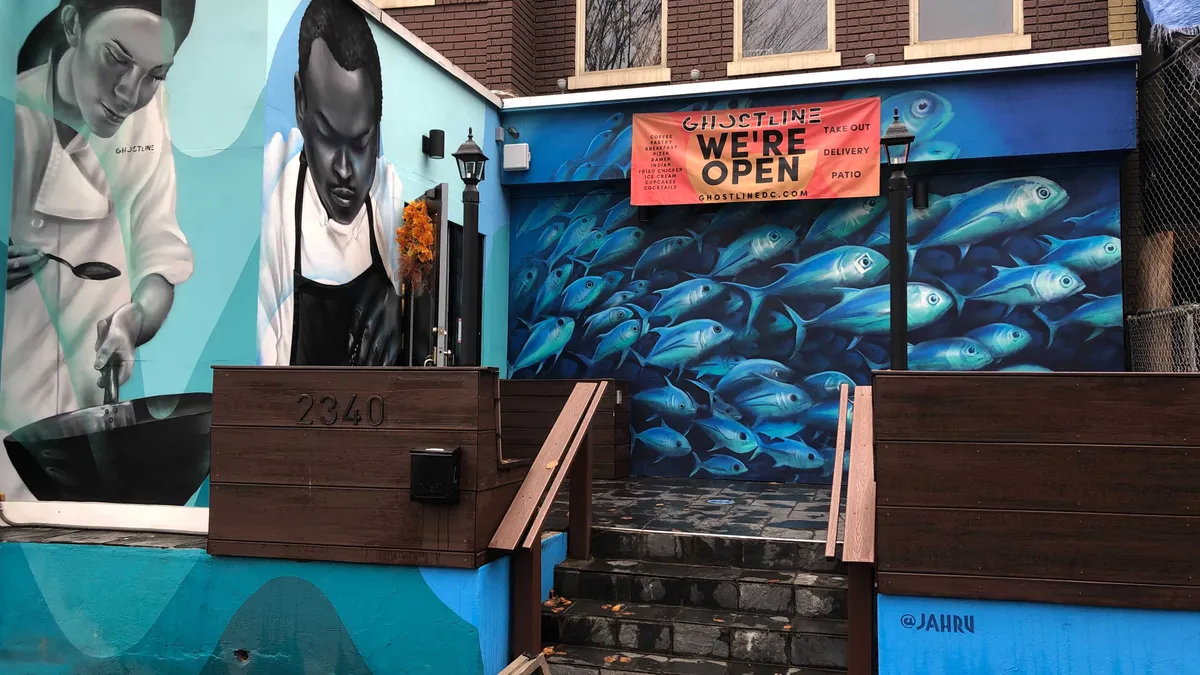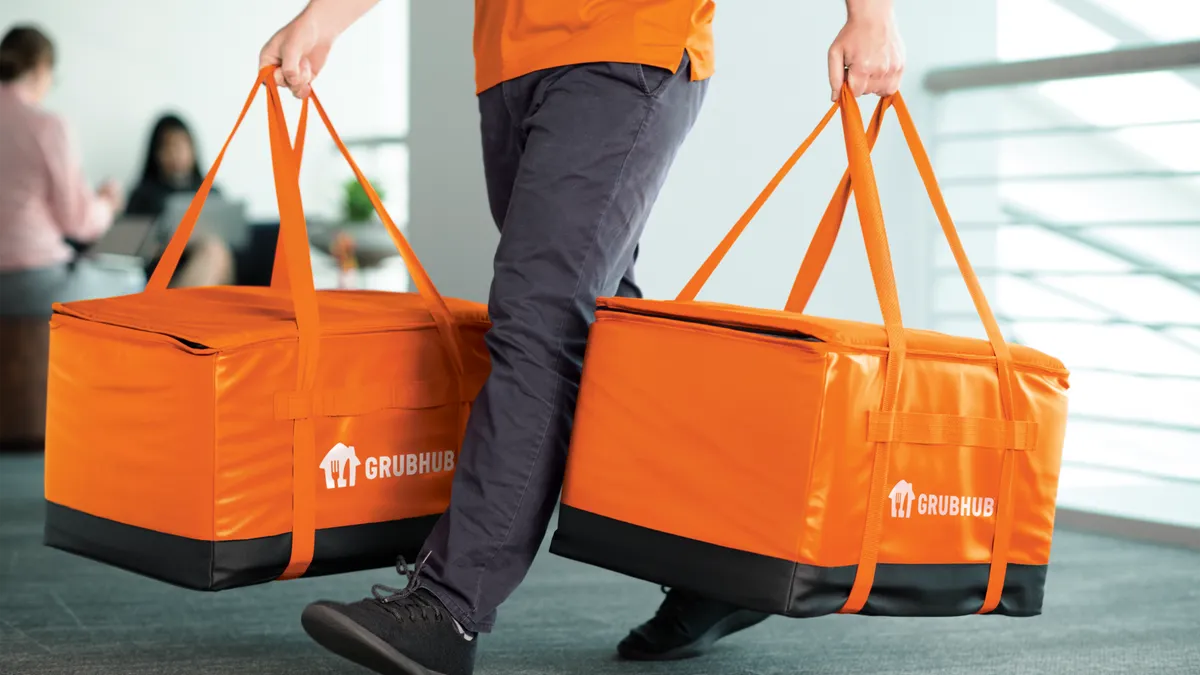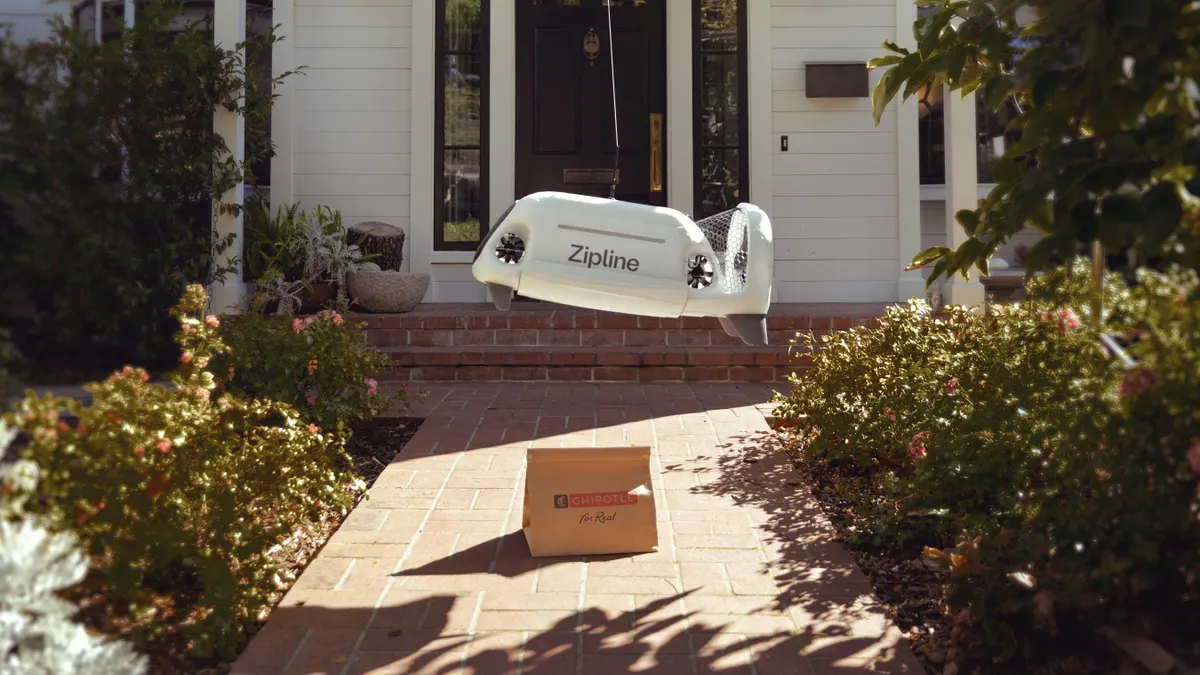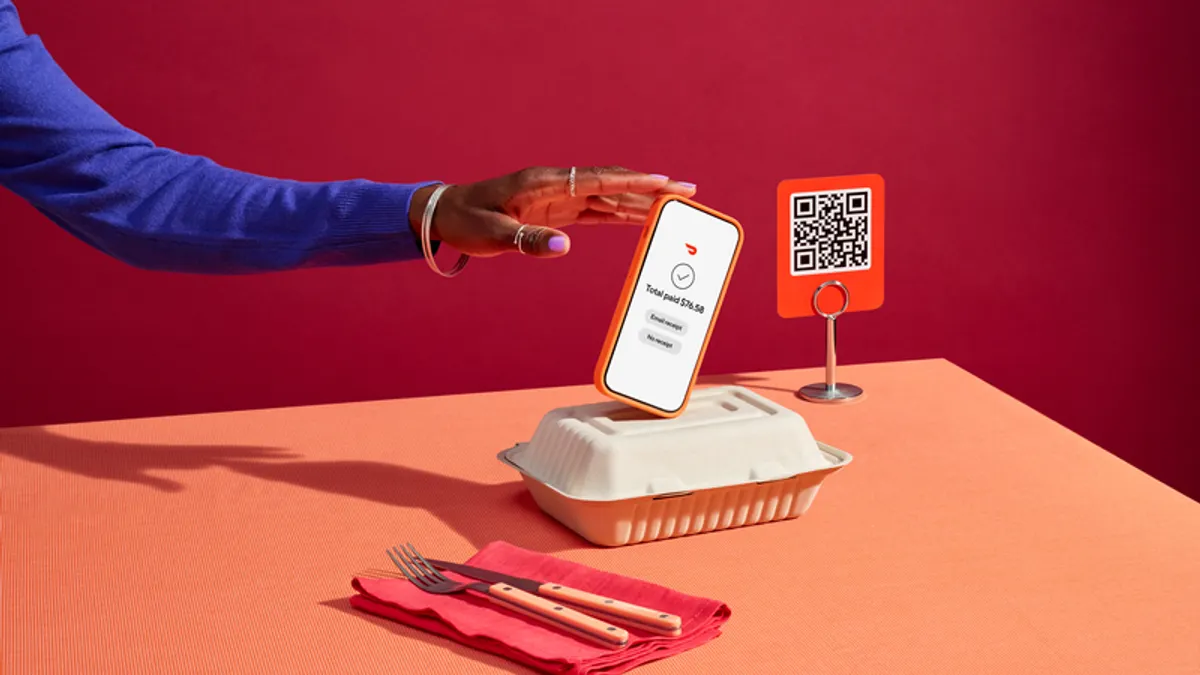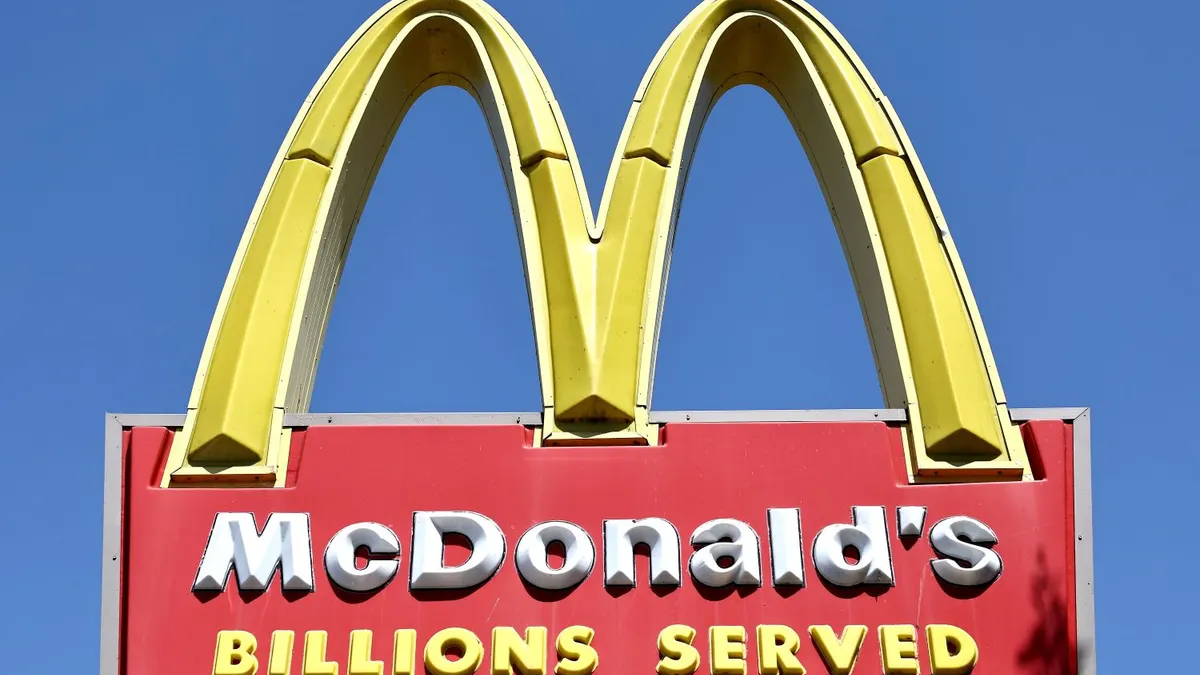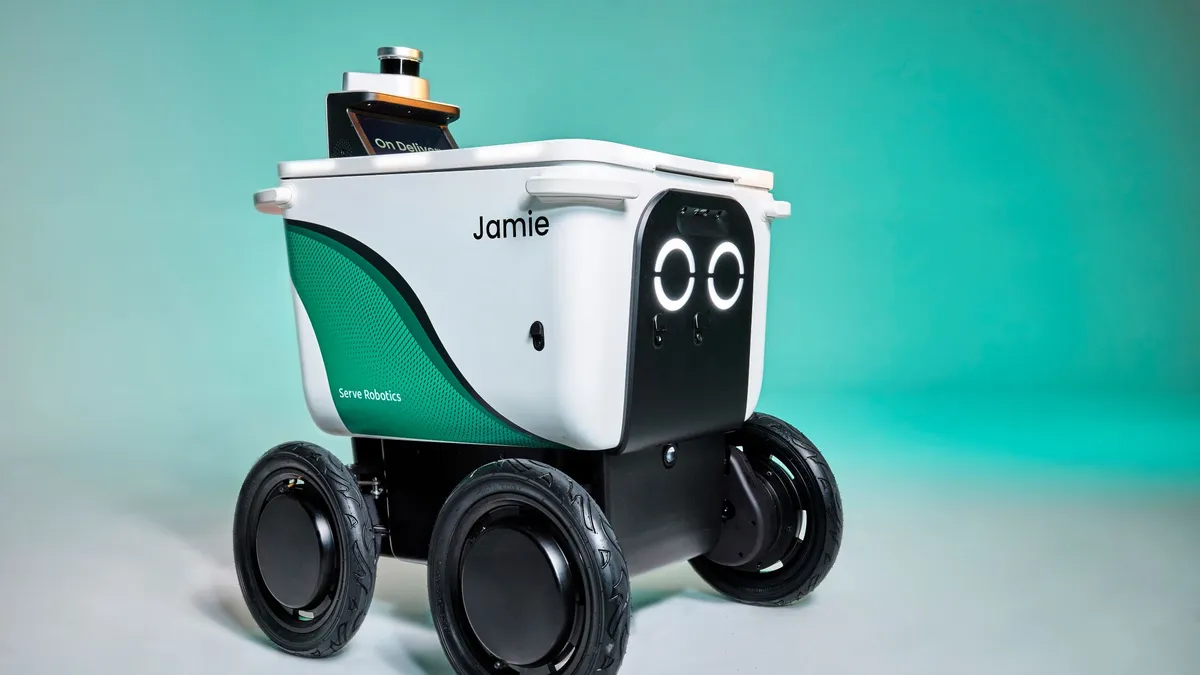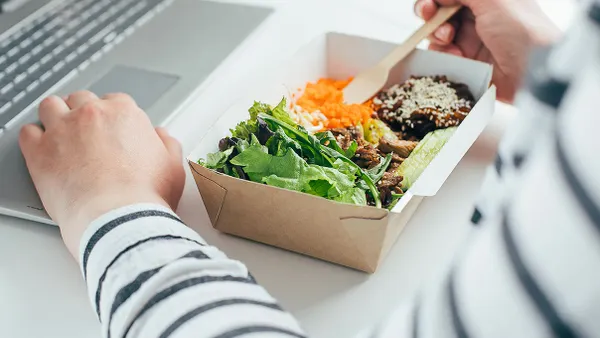This article is the fifth in a six-part series exploring the growth of the ghost kitchen market. Next week, Restaurant Dive will look at the future of this segment in the U.S. The full series will be posted here.
When restaurateur Aaron Gordon’s two Washington, D.C., restaurants raked in 80% of sales the first weekend of dining room closures, he was convinced it was a fluke.
"I thought for sure we were going to be in big, big trouble and not even make it a couple of months. We opened just for delivery and takeout…. And before that time had only really done 10% or 15% of [sales through] delivery. I thought we’d be down by 70% or 80%," Gordon said. "But with zero seats, we did this enormous number."
He conflated the stellar demand for his off-premise business with goodwill from neighbors trying to be supportive through a tough time, and assumed sales would wane as generosity faded. But the following weekend sales climbed to 90% of what they were in 2019, and the weekend after that 100%, until the restaurants were operating at 105% of last year’s sales on delivery and takeout alone.
After about a month of these numbers, Gordon remembered a 6,000-square-foot restaurant space he had toured in Glover Park, a neighborhood near Georgetown, in November 2019. The brick-and-mortar unit used to be a bar, and at the time he decided the space, with a sprawling 2,000-square-foot outdoor patio, was too large for his needs. But seeing the property again in March got his wheels turning: what if he pulled out all of the booths, tables and chairs, and made the space one giant kitchen?
"Even then I felt that [the pandemic] was not gonna be three or four months. We were looking at two years, at a minimum, so I was already thinking out to 2022 and maybe even 2023," Gordon said. "The heyday of the restaurant boom, of the last 15 years, has changed significantly… I wanted to combine a ghost kitchen idea with several chefs… doing several concepts under one roof would allow us to [leverage] economies of scale."
Just over six months later, Ghostline — a ghost kitchen food hall featuring six restaurant vendors — was born.
"We believe that this is not the future of restaurants, but one of them," Gordon said.
Leveraging economies of scale, delivery boom
It cost Gordon about $300,000 to build out more kitchen space in the old bar location, which now houses three cooking stations. If the brick-and-mortar unit had not already been a restaurant, he said the conversion would probably cost a couple of million dollars — a financial impossibility.
"We had a huge advantage," Gordon said. "I think gone are the days that people spend $1 million, $2 million on a restaurant build-out, especially in these times. That was… key to the space, that it was largely built out."
Finding partner chefs wasn’t a challenge, either. Gordon reached out to restaurateurs he had worked with in the past — like Hiro Mitsui of Ramen by Uzu — and some made recommendations for additional candidates. In addition to ramen, Ghostline includes ice cream, cupcake, Indian, fried chicken and bakery concepts, as well as beer, wine, batch cocktails and groceries. Current restaurateurs have plans to launch sushi and Tex-Mex virtual brands.
"I think gone are the days that people spend $1 million, $2 million on a restaurant build-out, especially in these times."

Aaron Gordon
Owner, Ghostline
"We’ve actually had a number of [restaurateurs] call us that are interested in … closing their stores and coming in and working with us. But right now we’re kind of already at our max. We started looking at a property next door … because if it’s a success then it makes sense to add more concepts to it," Gordon said.
Joining Ghostline has been a huge financial step forward for Mitsui, who said he was only making 10% of 2019 sales at his 100-square-foot stall in food hall Union Market at the start of the pandemic, when diners were not allowed inside. Mitsui was forced to lay off his staff, cooking his ramen and running his business by himself. He was also struggling against delivery fees from third-party aggregators, which were capped by the mayor of D.C. at 15% in May, but were still gouging his revenue.
"I had been looking at this type of business for a long time, and when [Aaron and I] started talking about this concept, I was like, you know what, I want to do it. Definitely this business model is going to be the new normal," Mitsui said.
"In my opinion, Union Market was a great idea pre-COVID. Now it’s the worst idea ever because you have to supply all those vendors — you need to have 2,000 people under the same roof at the same time," Gordon said. "It’s like going to a [Washington] Cap’s hockey game every single day of the week. It’s not going to happen… at least not for another year or two. So [Hiro] was thrilled. He jumped right on it."
Breaking free of third-party commission fees
Ghostline waived rent for restaurant vendors for eight weeks, didn’t require them to pay a deposit and bought all of the necessary kitchen equipment, eliminating up-front costs for partners. In exchange, Ghostline takes 12% of each concept’s sales to cover rent, ordering technology, packaging and expediters to answer phones.
"We’re essentially doing everything. They need to come in and cook the best food they could possibly cook. And then we take care of the rest," Gordon said.
And thanks to the cost savings that come with housing six different restaurants under one roof, Ghostline could afford to launch a crucial asset: its own delivery fleet.
"We just wanted [Ghostline] to be a no brainer for everything. We wanted everyone sharing rent, sharing drivers and delivery. Everyone is sharing the same food vendors and getting the best prices," he said. “Basically everything we could [do] to fight this world-wrecking, restaurant-destroying virus, and be able to do creative things, and fun things together."
Four to five drivers service Ghostline during the day and around eight to 10 at night, delivering meals within a two-mile radius, Gordon said. Eventually, he hopes to bring other local restaurants in to share the cost, too.
Having access to in-house delivery has been a major relief for Mitsui. He said that having direct control over the delivery experience helps him better communicate with customers and receive their feedback more easily.
"With this business model, I believe that relationship with the customers is very important, because I cannot really see a customer’s face anymore. So [direct delivery] makes me less stressed," he said.
"We wanted everyone sharing rent, sharing drivers and delivery. Everyone is sharing the same food vendors and getting the best prices."

Aaron Gordon
Owner, Ghostline
A lack of delivery commission fees per order has also helped drive sales quickly. Less than two months since Ghostline’s launch, his virtual Ramen by Uzu outpost is making about as much as his Union Market location, where he has operated for almost three years and has the benefit of local brand recognition and regular customers. That location is also now open for in-person ordering.
"Ghostline is a new venture, a new venue, a new location … When we started I couldn’t really project how much revenue," Mitusi said. "But [sales] are getting better, and we are seeing lots of repeat customers ordering food from us … lots of good responses from neighborhood people."
This is the first ghost kitchen concept that Mitsui has been a part of. There were some initial stumbling blocks since chefs had to learn how to best share their kitchen space and allocate time for orders because diners can order from multiple vendors on the same ticket for pickup and delivery. But he feels that Ghostline’s model has allowed him to grow sales more quickly than at a typical food hall format.
And now that he has access to the concept’s kitchen space, which is much larger than the induction heater he cooks on at Union Market, he can ramp up his production as well. He plans to seek out more ghost kitchen expansion opportunities in the future.
On-premise opportunity for post-pandemic future
Gordon hopes to bring additional menus to Ghostline every six months or so to drive community interest. Chefs that sign onto the project do not have a personal guarantee that their spot will be permanent, so restaurants could potentially rotate as well depending on sales performance.
"If it works out great. If it doesn’t work out, they have absolutely nothing to lose," Gordon said.
Ghostline also has space for a third kitchen, which could accommodate an additional three to four restaurant concepts, Gordon estimates. Mitsui said he hopes to open Sushi by Uzu early next year.
Ghostline also is seating guests on-premise in its private outdoor patio, maintaining social distancing between parties. The ghost food hall’s on-premise asset is unusual for the segment, and primes the model to succeed in both a pandemic and post-pandemic environment, Gordon said.
"There’s a little sidewalk that goes directly from Wisconsin Avenue toward the back patio, so that you don’t even have to go through the [restaurant] space… that’s fairly rare in this city," he said. "We’re not the type of [ghost] kitchen … where you get a really cheap brand somewhere out in the suburbs and deliver all over town. We’re in the middle of the city."
Ghostline has already begun asserting its place as a cultural hub for its neighbors, launching a weekly jazz series on its patio in mid-September with 15 gas heaters around the space to keep patrons warm. The ghost kitchen also plans to add a fire pit and a tent to the patio to keep diners warm as temperatures drop.
"This idea is really nice because we’re prepared both to [outlast] a two-to-four-year pandemic if need be, but we’re also in a pretty good place [with] our patio," Gordon said. "So pandemic or no pandemic, we’re offering something for everyone."
The Ghost Kitchens series is brought to you by Leer, a recognized leader in the temperature-controlled storage industry. To learn more visit their website. Leer has no influence over Restaurant Dive's coverage within the articles, and content does not reflect the views or opinions of Leer and its employees.



